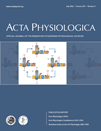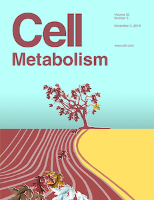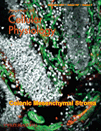
Current Opinion in Physiology
Scope & Guideline
Illuminating Emerging Trends in Physiological Science
Introduction
Aims and Scopes
- Cellular and Molecular Physiology:
The journal frequently publishes studies exploring the cellular and molecular mechanisms underlying physiological processes, including signaling pathways, gene expression, and cellular interactions. - Cardiovascular Physiology:
A significant portion of the research emphasizes cardiovascular physiology, investigating mechanisms of heart function, vascular biology, and the role of adrenergic receptors in cardiovascular health and disease. - Endothelial Biology:
Research on endothelial cells and their role in various physiological and pathological conditions is a prominent area, including studies on endothelial dysfunction, aging, and their involvement in diseases like hypertension and diabetes. - Exercise Physiology:
The journal highlights the physiological adaptations to exercise, exploring the impact of physical activity on cardiovascular health, muscle function, and overall metabolic regulation. - Non-coding RNAs and Physiology:
Emerging themes include the investigation of non-coding RNAs in regulating physiological processes, emphasizing their roles in cellular signaling and disease mechanisms. - Autophagy and Cell Homeostasis:
Research on autophagy and its implications for cell homeostasis, stress responses, and disease states is a consistent theme, linking basic biology to therapeutic applications.
Trending and Emerging
- Extracellular Vesicles in Disease:
There is a noticeable increase in research on extracellular vesicles, particularly their roles in mediating disease processes such as cardiometabolic diseases and cancer, showcasing their potential as biomarkers and therapeutic targets. - Adrenergic Receptor Signaling:
Recent publications have emphasized the complexity of adrenergic receptor signaling in various physiological contexts, particularly in relation to cardiovascular health, aging, and heart failure. - Endothelial Cell Function and Pathology:
The role of endothelial cells in health and disease is increasingly highlighted, with research focusing on their contributions to conditions such as diabetes, autoimmune diseases, and cardiovascular disorders. - Mechanotransduction and Cellular Responses:
Emerging studies are exploring mechanotransduction pathways, emphasizing how mechanical forces influence cellular behaviors and adaptations, particularly in vascular and muscle physiology. - Non-coding RNAs in Physiology:
The investigation of non-coding RNAs, especially in relation to their regulatory roles in physiological processes, is gaining momentum, indicating a shift towards understanding their functional significance in health and disease.
Declining or Waning
- Microbiome Research:
Although microbiome studies were once a frequent topic, there appears to be a decreasing emphasis on this area, with fewer papers addressing the microbiome's role in physiology and disease. - Neurophysiology:
The exploration of neurophysiological mechanisms, particularly in relation to sensory processing and proprioception, seems to be waning, with fewer articles dedicated to these topics in recent publications. - Gastrointestinal Physiology:
Research focused on gastrointestinal physiology and related disorders has also diminished, with less frequent discussions on topics like gut motility and digestive processes. - Inflammation and Immune Responses:
Although still relevant, the frequency of papers specifically focusing on inflammation and immune responses in various physiological contexts appears to be declining. - Sex Differences in Physiology:
While sex differences remain an important research area, there seems to be a reduced emphasis on this theme, with fewer studies highlighting the impact of sex on physiological processes.
Similar Journals

CANADIAN JOURNAL OF PHYSIOLOGY AND PHARMACOLOGY
Catalyzing Scholarly Dialogue in Biomedical ResearchCanadian Journal of Physiology and Pharmacology, published by Canadian Science Publishing, is a leading peer-reviewed journal dedicated to advancing knowledge in the fields of physiology and pharmacology. With an ISSN of 0008-4212 and an E-ISSN of 1205-7541, this journal has been at the forefront of biomedical research since its inception in 1964. The journal operates within a constrained access model, ensuring a selective dissemination of high-quality research, while maintaining its esteemed position in the Q3 quartile across multiple relevant categories such as Medicine, Pharmacology, and Physiology as of 2023. Researchers, professionals, and students alike will find the journal a valuable resource for emerging trends and comprehensive studies that shape contemporary science, as evidenced by its competitive Scopus rankings. The Canadian Journal of Physiology and Pharmacology is vital for fostering scholarly dialogue and innovation in the scientific community, encouraging contributions that promote a deeper understanding of physiological and pharmacological phenomena.

JOURNAL OF PHYSIOLOGY-LONDON
Advancing the Frontiers of Physiology and Sports ScienceJOURNAL OF PHYSIOLOGY-LONDON, published by WILEY, stands as a prestigious beacon in the fields of Physiology and Sports Science. Established in 1878, this journal has a rich history of disseminating crucial research findings and advancing scientific knowledge, continuing its impact into the present day with an anticipated convergence in 2024. Recognized for its excellence, it ranks in the Q1 category for both Physiology and Sports Science in 2023, cementing its position within the top echelons of academic publications. With a Scopus rank of #26 out of 193 in the Biochemistry, Genetics and Molecular Biology _ Physiology category, the journal boasts an impressive 86th percentile, reflecting its high-quality contributions to the scientific community. Although not open access, its extensive archive and reputation ensure that it remains a vital resource for researchers, professionals, and students eager to stay at the forefront of physiological science. For those looking to deepen their understanding of physiological mechanisms and their applications, the JOURNAL OF PHYSIOLOGY-LONDON is an indispensable resource.

Function
Unraveling biological complexities for transformative healthcare solutions.Function is a pioneering open access academic journal published by Oxford University Press, dedicated to advancing research in the fields of Cancer Research, Cell Biology, Molecular Medicine, and Physiology. Since its inception in 2020, this journal has quickly established itself as a vital resource for researchers and professionals alike, achieving a commendable impact factor in the 2023 rankings, where it stands in the Q2 quartile across multiple categories. Located in the heart of the United Kingdom, Function aims to foster a global exchange of knowledge by providing free and unrestricted access to cutting-edge research, facilitating collaboration and innovation within the scientific community. With a robust focus on emerging discoveries and interdisciplinary approaches, this journal encourages contributions that unravel the complexities of biological functions, paving the way for transformative advancements in healthcare and related sciences. As it converges from 2020 to 2024, Function continues to be an invaluable platform for disseminating research that has the potential to shape the future of medicine and biology.

Acta Physiologica
Unveiling the Wonders of Human PhysiologyActa Physiologica is a premier, peer-reviewed journal published by WILEY, dedicated to the dissemination of high-quality research across the field of physiology. With an impressive impact factor reflective of its Q1 category ranking in Physiology for 2023, this journal is a vital resource for researchers, professionals, and students alike, seeking to explore the complexities of biological systems. The journal is indexed with a commendable Scopus rank of #18 out of 193 in its category, placing it within the top 10% of its field, which underscores its influence and citation frequency within the academic community. Acta Physiologica publishes a variety of articles that address fundamental physiological concepts, innovative methodologies, and cross-disciplinary research. With its open access options, the journal ensures that cutting-edge knowledge is readily accessible, fostering an environment of collaboration and advancement in the study of physiology. Spanning from 2006 to 2024, the journal continues to be at the forefront of physiological research and education, encouraging the global sharing of knowledge through its comprehensive content.

American Journal of Physiology-Regulatory, Integrative and Comparative Physiology
Elevating the Standard of Physiological ScholarshipThe American Journal of Physiology-Regulatory, Integrative and Comparative Physiology, published by the American Physiological Society, serves as a premier platform for disseminating cutting-edge research in the fields of physiology, emphasizing regulatory, integrative, and comparative studies that advance our understanding of bodily functions. With an ISSN of 0363-6119 and E-ISSN of 1522-1490, this esteemed journal is recognized for its substantial impact, maintaining a 2023 Q2 ranking in both the physiology and medical physiology categories as well as commendable positions in Scopus rankings. The journal has been pivotal since its inception in 1977 and continues to foster interdisciplinary dialogue among researchers, professionals, and students alike, contributing significantly to the evolving landscape of physiological sciences. Although it operates under a traditional subscription model, its commitment to high-quality, peer-reviewed content ensures that it remains an essential resource for anyone engaged in physiological research and education.

Cell Metabolism
Fostering breakthroughs in cellular metabolism.Cell Metabolism is an esteemed journal published by CELL PRESS, dedicated to advancing the understanding of metabolic processes within cell biology, molecular biology, and physiology. With an impactful 2023 ranking placing it at Q1 in multiple categories and earning a distinguished position in the top percentiles of its respective fields, this journal serves as an essential resource for researchers, professionals, and students who are investigating the dynamic roles of metabolism in health and disease. Its rigorous peer-review process ensures high-quality publications that reflect the latest advancements in metabolic research. Since its inception in 2005, Cell Metabolism has become a pivotal platform for disseminating critical findings that not only expand scientific knowledge but also foster innovative approaches to tackle metabolic disorders. By prioritizing accessibility and scholarly excellence without the Open Access model, it remains a premier source for cutting-edge research insights.

JOURNAL OF CELLULAR PHYSIOLOGY
Exploring the Depths of Cell Function and PhysiologyJOURNAL OF CELLULAR PHYSIOLOGY, published by Wiley, is a leading peer-reviewed journal that has been at the forefront of cellular research since its inception in 1945. With its prestigious Q1 and Q2 rankings in the fields of Clinical Biochemistry and Cell Biology, this journal is highly regarded within the scientific community, reflecting its significant impact factor and rigorous peer-review process. Addressing the intricacies of cell function and physiology, it serves as a crucial resource for researchers, professionals, and students dedicated to advancing knowledge in the life sciences. The journal publishes cutting-edge research articles, integral reviews, and significant findings that bridge basic biology and clinical applications, ensuring access to high-quality scholarly content that informs current practices and future research directions. Although not open access, the journal maintains a rich archive of studies, making it an essential reference point for those invested in the health and biological sciences.

Physiological Reports
Pioneering Open Access for Groundbreaking Physiological ResearchPhysiological Reports is a pioneering open-access journal published by WILEY, dedicated to advancing the field of physiology through the dissemination of high-quality research. Since its inception in 2013, this journal has provided a platform for innovative studies in both general physiology and medical physiology, making significant contributions to our understanding of biological processes. With an impact factor that reflects its growing influence—as evidenced by its placement in the Q2 category for physiology and medical physiology in 2023—Physiological Reports is positioned as a vital resource for researchers and practitioners alike. The journal encourages the submission of diverse studies ranging from cellular mechanisms to systemic physiology, presenting a unique opportunity for authors to reach a global audience without access barriers. It has established a reputation for rigorous peer review and timely publication, ensuring that cutting-edge research is readily available to stimulate further inquiry and collaboration in the scientific community.

FISH PHYSIOLOGY AND BIOCHEMISTRY
Pioneering Research on Fish and Ecosystem DynamicsFISH PHYSIOLOGY AND BIOCHEMISTRY, published by Springer, is a leading journal in the fields of aquatic science, biochemistry, and physiology, with an impressive trajectory since its inception in 1986 and continuing through 2024. Operating from the Netherlands, this journal serves as a vital platform for researchers, professionals, and students alike, showcasing innovative studies that explore the physiological and biochemical aspects of fish, contributing significantly to our understanding of aquatic ecosystems and their inhabitants. With a robust impact factor reflected in its Q1 status in Aquatic Science and notable rankings in other relevant categories, FISH PHYSIOLOGY AND BIOCHEMISTRY maintains a strong scholarly influence, evidenced by its Scopus ranking within the top quartiles of various biological sciences disciplines. While the journal does not currently offer open access options, it remains a cornerstone for advancing knowledge and fostering collaboration within the community dedicated to aquatic biology and related fields.

JOURNAL OF MUSCLE RESEARCH AND CELL MOTILITY
Unraveling the Complexities of Muscle Function and MobilityJOURNAL OF MUSCLE RESEARCH AND CELL MOTILITY, published by Springer, is a premier journal dedicated to advancing our understanding of muscle biology and cellular motility. With an ISSN of 0142-4319 and an E-ISSN of 1573-2657, this journal stands out in the fields of biochemistry, cell biology, and physiology, proudly holding a Q2 ranking in each of these categories as per 2023 metrics. Covering significant developments from its inception in 1963 to its anticipated contributions through 2024, this journal serves as a vital platform for researchers and professionals to disseminate their findings and insights globally. Although it does not currently offer open access, its robust academic rigor and relevance are evident from its Scopus rankings, making it a crucial resource for those invested in the biological sciences. With a focus on original research articles, reviews, and methodological advancements, the journal fosters innovative collaborations and discussions within the scientific community, making it an invaluable addition to any researcher’s library.